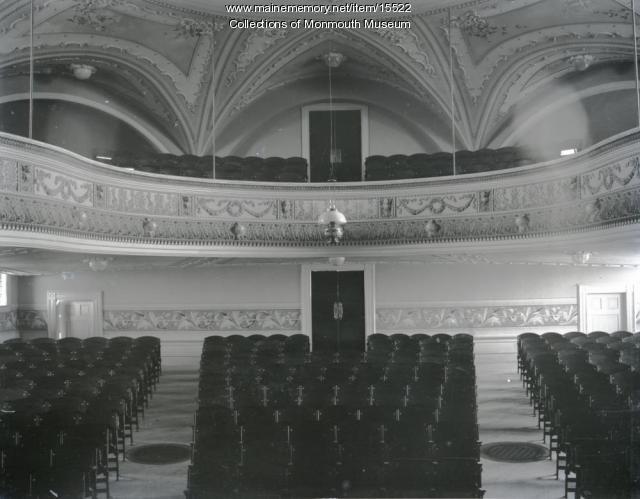Keywords: bead work
- Historical Items (12)
- Tax Records (0)
- Architecture & Landscape (0)
- Online Exhibits (13)
- Site Pages (14)
- My Maine Stories (2)
- Lesson Plans (0)
Online Exhibits
Your results include these online exhibits. You also can view all of the site's exhibits, view a timeline of selected events in Maine History, and learn how to create your own exhibit. See featured exhibits or create your own exhibit
Exhibit
Gifts From Gluskabe: Maine Indian Artforms
According to legend, the Great Spirit created Gluskabe, who shaped the world of the Native People of Maine, and taught them how to use and respect the land and the resources around them. This exhibit celebrates the gifts of Gluskabe with Maine Indian art works from the early nineteenth to mid twentieth centuries.
Exhibit
The Schooner Bowdoin: Ninety Years of Seagoing History
After traveling to the Arctic with Robert E. Peary, Donald B. MacMillan (1874-1970), an explorer, researcher, and lecturer, helped design his own vessel for Arctic exploration, the schooner <em>Bowdoin,</em> which he named after his alma mater. The schooner remains on the seas.
Exhibit
Dressing Up, Standing Out, Fitting In
Adorning oneself to look one's "best" has varied over time, gender, economic class, and by event. Adornments suggest one's sense of identity and one's intent to stand out or fit in.
Exhibit
Music in Maine - Community and School Marching Bands
"… Penobscot-style upright feather headdresses and beaded collars and cuffs. Singing, dancing, performing reenactments and showcasing their artwork…"
Exhibit
Holding up the Sky: Wabanaki people, culture, history, and art
Learn about Native diplomacy and obligation by exploring 13,000 years of Wabanaki residence in Maine through 17th century treaties, historic items, and contemporary artworks—from ash baskets to high fashion. Wabanaki voices contextualize present-day relevance and repercussions of 400 years of shared histories between Wabanakis and settlers to their region.
Exhibit
Music in Maine - Opera, Orchestras and Stages
"… blend, velvet, jersey and accented with glass beads and metal bells, this jacket creates a rustling and ringing soundscape when worn."
Exhibit
George Popham and a group of fellow Englishmen arrived at the mouth of the Kennebec River, hoping to trade with Native Americans, find gold and other valuable minerals, and discover a Northwest passage. In 18 months, the fledgling colony was gone.
Exhibit
Northern Threads: Mourning Fashions
A themed exhibit vignette within "Northern Threads Part I," featuring 18th and 19th century mourning jewelry and fashions.
Exhibit
For one hundred years, Acadia National Park has captured the American imagination and stood as the most recognizable symbol of Maine’s important natural history and identity. This exhibit highlights Maine Memory content relating to Acadia and Mount Desert Island.
Exhibit
Begin Again: reckoning with intolerance in Maine
BEGIN AGAIN explores Maine's historic role, going back 528 years, in crisis that brought about the pandemic, social and economic inequities, and the Black Lives Matter movement in 2020.
Exhibit
We Used to be "Normal": A History of F.S.N.S.
Farmington's Normal School -- a teacher-training facility -- opened in 1863 and, over the decades, offered academic programs that included such unique features as domestic and child-care training, and extra-curricular activities from athletics to music and theater.
Exhibit
Lincoln County through the Eastern Eye
The Penobscot Marine Museum’s photography collections include nearly 50,000 glass plate negatives of images for "real photo" postcards produced by the Eastern Illustrating and Publishing Company of Belfast. This exhibit features postcards from Lincoln County.
Exhibit
CODE RED: Climate, Justice & Natural History Collections
Explore topics around climate change by reuniting collections from one of the nation's earliest natural history museums, the Portland Society of Natural History. The exhibition focuses on how museums collect, and the role of humans in creating changes in society, climate, and biodiversity.













